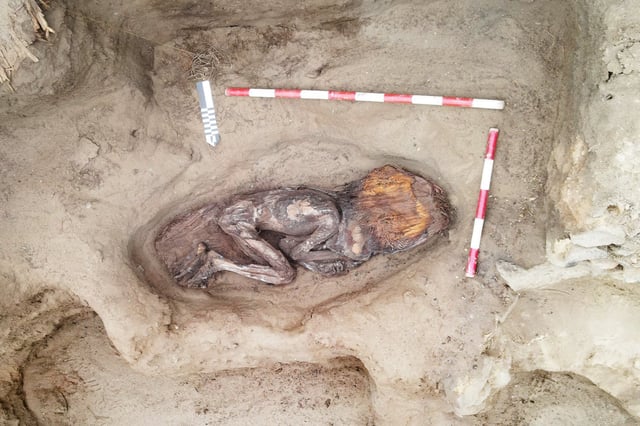Overview
- Archaeologists in Peru uncovered the 5,000-year-old remains of an elite woman at the Áspero site, part of the Caral civilization, known as the oldest urban center in the Americas.
- The woman’s remains, remarkably preserved with skin, hair, and nails intact, were wrapped in layers of fabric and adorned with a macaw feather mantle, indicating her high status.
- Grave goods included a toucan beak, a stone bowl, a straw basket, weaving tools, and sweet potatoes, further emphasizing her societal importance and connections to trade networks.
- The discovery reinforces evidence of significant leadership roles for women in Caral society, challenging male-centric narratives of early civilizations.
- Researchers plan detailed bioarchaeological studies to explore her health, diet, cause of death, and the cultural context of her burial.
